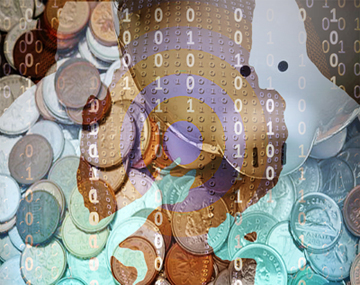Banking
BIG DATA IN BANKING: HOW BNP PARIBAS IS ANSWERING QUESTIONS WITH ITS DATA

By James Eiloart, Tableau Software
How much data does the number one bank in the Eurozone collect?
The answer is: a lot. Some experts predict that by 2020, we’ll be generating 35 zettabytes of data every year. That’s 35 billion terabytes. And right now, approximately 80 percent of all data is stored by enterprises. So it’s easy to see why companies are looking for ways to keep up with their data, and even use it to their advantage.
The number one bank in the Eurozone—BNP Paribas—has more than 4,000 physical locations, 200,000 employees, and 15 million customers. Every time one of those customers swipes a card, data is generated. Each time a customer interacts with an online banking system, even more data is generated. Every time a new employee starts or a current employee departs: data. Each bank branch alone generates a wealth of data on customer behavior, profitability, and much more.
This is ‘big data’ in action. For financial services firms, being able to take advantage of this wealth of data can provide a competitive and commercial edge. Rather than just tracking and storing this data in databases or spreadsheets, firms are moving toward a new strategy: using their data to make proactive business decisions.
For this data strategy to be successful, it’s critical to find ways to make your data easy to explore and analyze, to find tools that expand data analytics beyond only those fluent in business intelligence lingo, and to make data analytics fast—very fast.
For BNP Paribas, this strategy centered on Tableau’s data discovery and visualization capabilities. Using Tableau, Pierre Thebault, marketing geoanalyst at BNP Paribas, has been able to show how financial services firms are turning their data into a business asset.
Thebault, who is responsible for analyzing and identifying geocoding trends across BNP Paribas’ business, leverages the bank’s data to identify prospects for new customers or existing customers with whom it could grow its business.
For instance, Thebault’s team can pinpoint prospects on a map, segmented by factors such as income, risk, or which of BNP Paribas’ services they already consume. From there, the bank can follow up with hyper-targeted marketing programs and find ways to provide highly localized services.
This type of data also informs where the bank will place new automated teller machines (ATMs). By visualizing the locations and density of competitor ATMs, alongside that of the bank’s customers, it can strategically place new ATMs to serve growing and changing customer bases.
The speed at which data can be visualized and understood is a critical. The visualizations the bank creates are relaying real-time information on customers and potential customers. The ability to access this information in seconds, not weeks, and to make it actionable is a key piece of the bank’s marketing strategy.
“Tableau is the quickest route from the data to the decisions,” Thebault says.
As more organization’s look for ways to leverage their data, it is also important that they put this data in the hands of the people who can use it. These are the people who can ask questions of data, and who can understand it in the context of their business—and those people aren’t always data scientists. That tools like Tableau can do this is a radical change from the days when data visualization was solely in the hands of the business intelligence experts. No offense to IT folks—who we all love and appreciate, especially when they save our bacon—but sometimes you want to get your hands dirty with information yourself. Sometimes you don’t want a middleman: you want to see your data, right now, without waiting for someone to work their technical magic.
For BNP Paribas, this means that everyone from the firm’s directors to branch managers can easily drill-down into data on each branch’s performance. Which branch is drawing the most new customers? Which is best at retaining old customers? Which is best at employee retention? What trouble spots and opportunities are emerging?
The bank reports that this type of analysis used to take weeks or even months. With Tableau, they’re able to access, share, and act on this information in minutes. Management can see data on any aspect of its branches instantly, and that data can be used to keep the branches healthy and growing. Branches can also monitor their own performance, as can individual employees, who are more empowered than ever.
This democratization of data—where anyone can view data and answer their own questions about it—is a key part of how financial services organizations can crack the big data challenge.
James Eiloart is a Vice President at Tableau Software where he leads sales across Europe, the Middle East, and Africa. James has a long history in the software industry, leading international sales teams. James is based in London.

-
Business3 days ago
docStribute appoints ex-Group CIO of Newcastle Building Society as Non-Executive Director
-
Technology3 days ago
How to Use AI to Optimize Customer Relationships
-
Business3 days ago
What Every Small Nonprofit Needs to Know About Form 990-N
-
Finance3 days ago
stc Bahrain and Aleph Zero Partner to Advance Blockchain DePIN Across the Gulf Region







